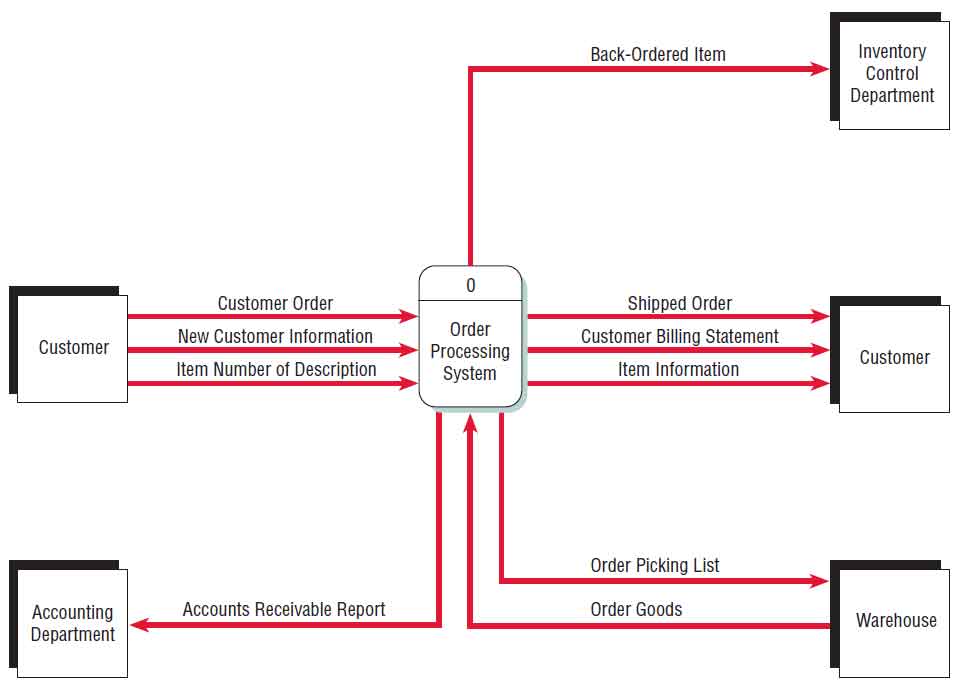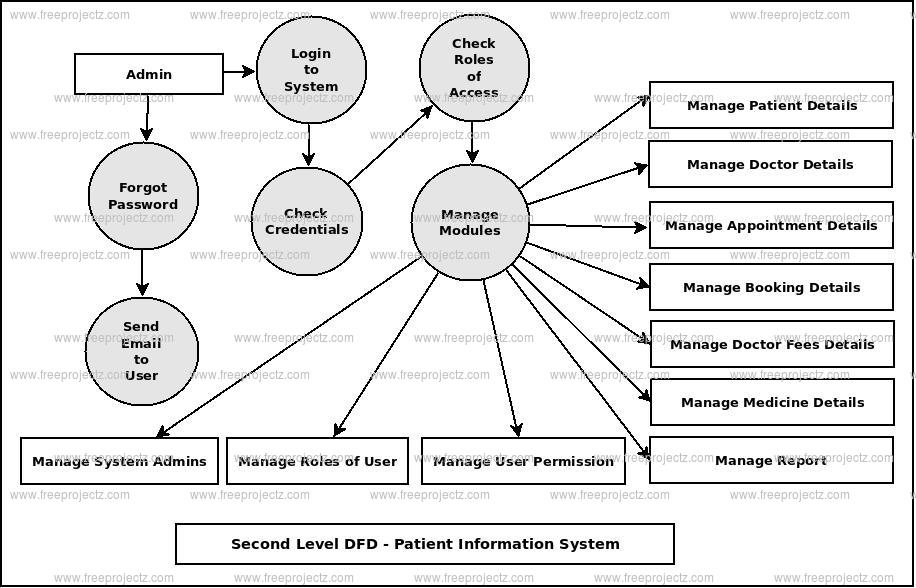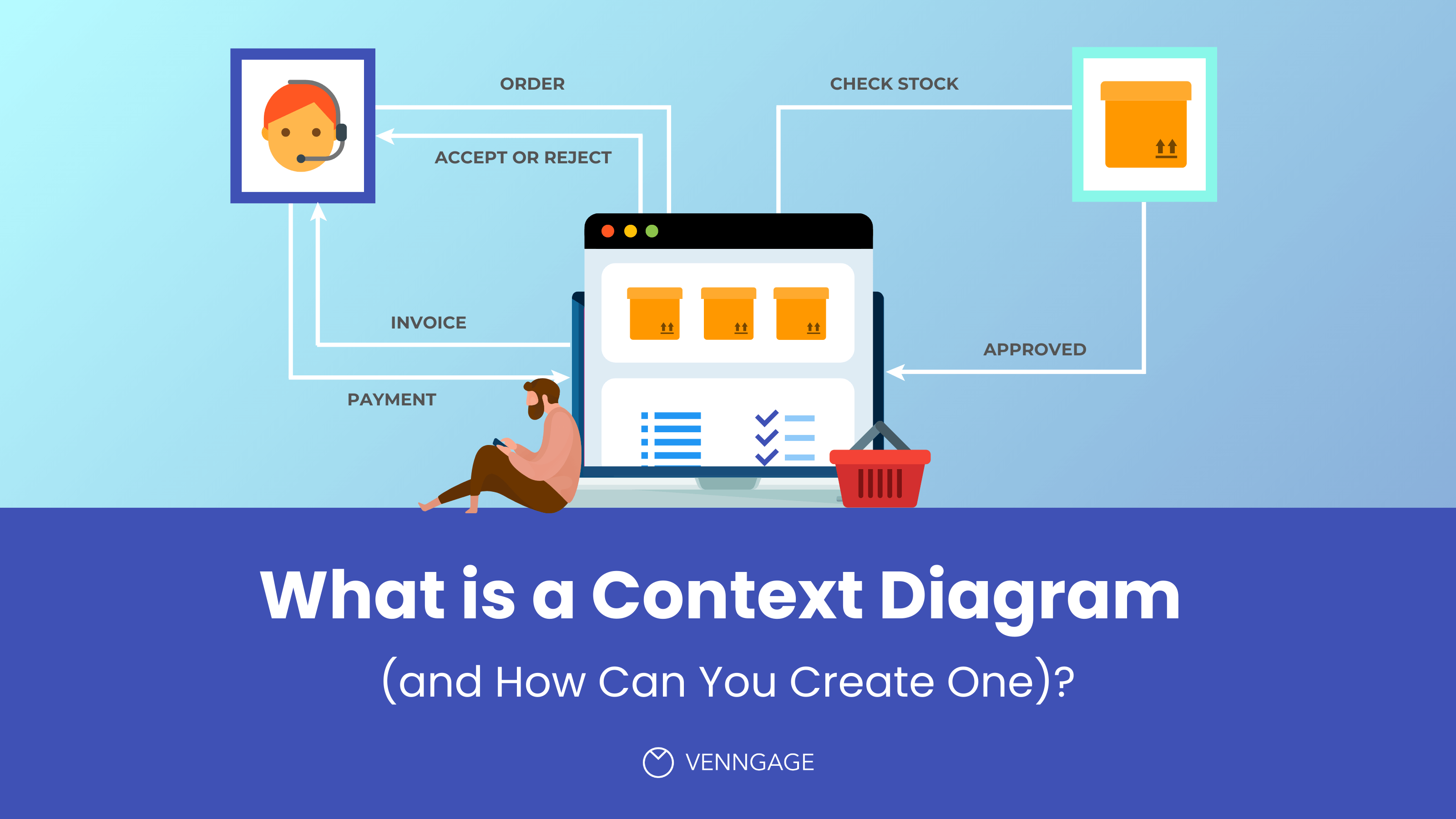An information system is a collection of interconnected components that work together to collect, process, store, and disseminate information. In the context of a business or organization, an information system can be used to support a variety of activities, including decision making, problem solving, communication, and data management.
A context diagram is a graphical representation of an information system that shows the relationships between the system and its external environment. It is a high-level view of the system that provides a broad overview of how the system interacts with its stakeholders, such as customers, employees, and suppliers.
A context diagram typically consists of a single box that represents the information system, surrounded by a series of smaller boxes that represent the external entities with which the system interacts. These entities may include other systems, organizations, or individuals. Arrows are used to show the flow of information between the system and the external entities.
The context diagram is an important tool for understanding the overall architecture of an information system. It helps to identify the key components of the system and how they fit together, as well as the external factors that may impact the system.
In addition to providing a high-level view of the system, the context diagram can also be used to identify potential points of failure or vulnerabilities. By understanding the interactions between the system and its external environment, organizations can take steps to mitigate risks and ensure the reliability and security of their information systems.
Overall, the context diagram is a valuable tool for understanding the role of an information system within an organization and for identifying opportunities for improvement and growth. It helps to ensure that the system is aligned with the needs and goals of the organization and is able to adapt to changing circumstances.






